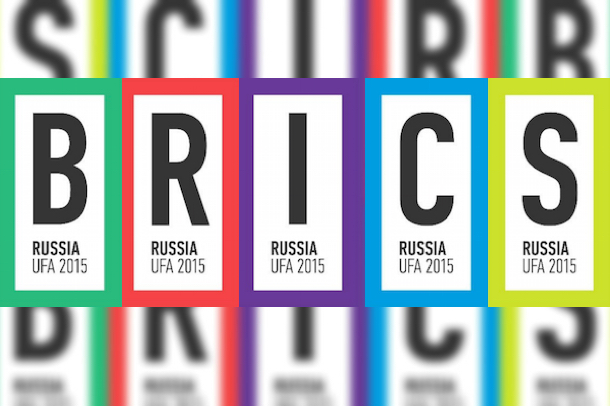
The BRICS and American Global Power
China’s rise has shaken up the global order. As East Asian governments, along with the United States, remain unable to develop a mutual security agreement over disputed islands, and the US pushes the Trans-Pacific Partnership to the exclusion of China as an alternative to the stagnating World Trade Organization, East Asia is riven with tensions. How to make sense of these developments in light of the larger potential challenge of China and rising powers for the United States?
On one hand, China continues to deepen its relations with Africa, replacing the Washington Consensus with Angola Model, based on commodity backed loans to obtain precious resources, especially oil, to fuel China’s party-led developmental state. China’s relations with Latin America also continue to deepen as China, for example, became Brazil’s largest trading partner in 2009 and relations between China and Latin American states expand including developing a ‘strategic alliance’ with Argentina including Chinese investment in Argentina and naval cooperation. Russia-China relations have also grown closer as, in 2014, the two powers signed a thirty-year, $400 billion gas deal. And in May, 2015, Vladimir Putin and Xi Jinping issued a deceleration of cooperation between the EEU and China’s plan for a Silk Road Economic Belt. Overall, this is part of China’s ‘one belt, one road’ initiative as, among other things, India and Pakistan are set to join the Shanghai Cooperation Organization next year.
On the other hand, the US appears relatively strong in its position of global dominance. Defense and defense related spending is estimated to be $841 billion for this year, about 34 percent of the world’s military spending. And the US spends about 30 percent of global research and development spending a comparable amount to Asia as a whole at 34 percent. And in 2014 the American gross domestic product was over $17.419 billion, above China’s $10.360 billion as the US significantly remains the world’s largest economy. These figures suggest that, while a relative decline in American power may have occurred in the last half century, overall we still live in, in many respects, an American-centered global capitalism.
Meanwhile, the BRICS (Brazil, Russia, India, China, and South Africa) continue to hold yearly meetings and appear to be constructing an institutional network through and against American hegemony.
At the 2015 Ufa, Russia BRICS conference, China pledged $41 billion for a BRICS currency pool contingency reserve (with Russia, Brazil, and India giving $18 billion, and South Africa $5 billion) as a step towards creating currency exchange relations against the dollar. And the launching of the BRICS development bank may provide an alternative to the continued dominance of the US and the West over the International Monetary Fund, World Bank, and UN developmental assistance system.
But tensions between the BRICS are also not without conflict. Brazil, for one, is well aware that China is pushing towards a potential relation of neocolonialism as it produces primary commodities such as soybeans for the Chinese market. To counter this, from 1992 to 2008, Brazil pursued 43 anti-dumping measures against China, along with 10 in 2013 and 16 in 2014. Tensions between China and India also continue, although economic relations continue to deepen. In 2014, for example, a two-week long standoff occurred over disputed border territory. India is also critical of China’s support for military and development projects in Pakistan, China’s increased presence in the Indian Ocean, and Chinese rule in Tibet, among other issues.

While India continues to have an interest in working to give historically underdeveloped and western dominated countries a higher position in the global hierarchy, it does so, in many regards, within the American space of power as US-India relations have become closer since the early 1990s. The two countries continue to hold yearly strategic dialogues to cooperate on issues of security, trade, education, science, and energy. And June 2015 was the decade anniversary of the US-India Civil Nuclear Cooperation Initiative, as the US has continued to support India’s use of nuclear technology as Obama and Modi make progress over making a deal that would make it easier for American companies to sell nuclear technologies to India. And trade between the two countries has increased five times over the past decade. Overall, then, India’s entry into global neoliberalism has been one of increasingly embracing American leadership.
For South Africa, the smallest BRICs country, participation in changing the norms of international power comes along with an increased emphasis on state led development. In the wake of neoliberalism’s path, more recently the country has embraced a developmental state model under ‘The New Growth Path.’ The New Growth Path plan aims to create five million jobs by 2020, much in part through state directed development such as state investment in infrastructure and construction. South Africa’s participation in the BRICs coincides with increased ties with China, the country’s largest trading partner, and increased Chinese investment in South Africa. Since formal diplomacy between the two states began in 1998, relations have continued to grow, signified in the ‘Beijing Deceleration’ of 2010, signed by both presidents. Overall, for South Africa, participation in the BRICs and other organizations, such as the G20 provides a way to slightly modify the rules of the international system and carve out a more independent space in the global economy.
But the ability of the BRICS to challenge the West may be slowing down. Much of the recent growth of rising powers was due to a global commodity boom from 2004 to 2013, driven by energy consumption growing by almost 60 percent in the period, the general prices of world resources increased four times. States such as Russia and Brazil greatly benefited from this, as their economies rely on the production and export of, in Brazil’s case, primary commodities such as soybeans, and in Russia’s case, especially oil and gas.
Growth within China, expected to be under 7 percent this year, is also reflective of the structural problems of the Chinese economy, most significantly dependence on exports to foreign markets and continual overinvestment in construction and infrastructure domestically to prop up the economy, as was the case with China’s $585 billion stimulus following the Great Recession. But China’s growth path was built upon relatively well educated cheap labor and a dramatic increase in wages and a move away from export dependence which would mean a massive reconfiguration of class relations in China. The Chinese party-state is not willing to let this happen, at least within strict limits.
Additionally, China’s increased political assertiveness is also increasing nationalist tensions throughout the region, making any dream of Chinese hegemony in East Asia appears increasingly impossible, particularly as tensions over East and Southeast Asian islands pull countries such as the Philippines closer to the Americans. China’s increased assertiveness may, in the long run, alienate East Asian powers that have historically had close ties to the US, such as Japan and South Korea, and continue to exacerbate nationalist rivalries within the region.
Overall, then, while we have moved into an increasingly multipolar world, and will continue to, the rise of China and the rest of the BRICS seems to be one as much incorporated into American hegemony as against it, and as China’s economic growth relatively slows, the ability of China to translate economic might into political will may increasingly become challenged, particularly as states throughout East Asia look to US political leadership to sustain regional security and stability. If, then, American power is in decline, it is not a sudden collapse so much as a slow crawl that will likely unravel over decades, not years.

